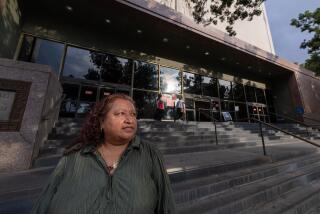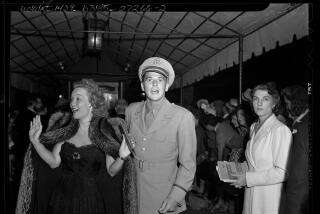Lawyers vs. Families: No Contest
- Share via
If you can’t afford a lawyer to help you get a divorce--and most Californians can’t--going to family court by yourself can be a terribly frustrating experience. Clerks may turn you away because you haven’t filled out the right form. Judges may tell you they don’t have time to listen to your long tale of domestic violence; you’ll have to write it all out in something called a “declaration under penalty of perjury.” And although you might win a battle for custody of your children, it’s nobody’s job to write up the order that the teachers will want before releasing them to you after school.
Two years ago, the state’s family law judges decided to do something about the huge and ever-growing number of people without lawyers attempting to find their way through a maze of papers and procedures designed by and for lawyers. The judges observed that the system doesn’t work when there is no lawyer to guide a client through the process. They said that the system’s current state “tends to exacerbate the already strained relationship of the parties” and makes settlement more difficult, and that the children ultimately pay the price.
And so the family court judges put together a plan called Family Court 2000 that emphasized mediation in place of courtroom battles. It called for a help center in every county, where volunteers supervised by a lawyer would provide basic assistance to the lawyerless. There would be new, simplified forms in plain English and modification of some ancient rules that limit the evidence a judge can consider. The proposal allowed for court battles where mediation wasn’t appropriate or didn’t work.
When lawyers saw the proposal, they were outraged. Resolutions of opposition came from the State Bar and city and county bar associations. Many lawyers said they did not believe there really was a problem that needed fixing. They said that many women did poorly in mediation because they gave in too easily to domineering husbands. And they predicted that nonlawyers working in the help centers would give incorrect advice.
The lawyers said everything would be fine if the state would just provide more judges and courtrooms to handle crowded family law dockets. But this “solution” misperceives the role of a judge. A judge cannot advise a lawyerless party from the bench on how to present his or her case. A judge who becomes a helper no longer appears impartial to anyone. Judges should be umpires, not coaches.
Overwhelmed by the hostile reaction, the judges in August gutted their plan and, in words familiar to those bowing to a more powerful foe, said they would do “further study.” But in a move that many believe was intended to get the controversial reforms back on track, Chief Justice Ronald M. George in October appointed some judges of stouter heart to replace others whose terms on a State Judicial Council panel were expiring. The reforms were quickly restored to the plan and the battle between judges and lawyers was rejoined.
Sensing the new resolve, the chair of the State Bar’s family law section, Andrea Palash, turned to the Legislature with a plea that the judges be reined in. On Nov. 6, the Senate and Assembly judiciary committees made clear at hearings in Los Angeles that they didn’t want any of the judges’ proposals implemented unless specifically authorized by statute. The judges, who hoped to test some of their more controversial reforms in pilot programs before going to the Legislature, agreed to submit their plan to Sacramento.
Statistics gathered from family judges around the state indicate that in 60% of the cases that end up getting a court hearing, at least one of the parties doesn’t have a lawyer; in 40% of the cases, neither has a lawyer. Most of these parties earn less than $40,000 a year and can’t afford a retainer of several hundred dollars and an hourly fee between $150 and $350.
Help centers operate successfully in many states and have functioned well as pilot programs in San Mateo and Santa Clara counties. The use of volunteers supervised by lawyers is a model perfected by the Harriet Buhai Center in Los Angeles, one of the most respected nongovernmental assistance programs in the nation.
As a retired judge, I sometimes fill in for judges who are absent for a day or two. There has never been a day when I haven’t seen people who couldn’t afford a lawyer flounder and fail as they attempted to obtain relief they were clearly entitled to. There are, of course, lawyers who provide low-fee or free services to help those of limited means, but their numbers don’t approach the need.
Lawyers don’t like to see familiar practices change, and some who practice family law fear that these reforms would affect their incomes. Their opposition is similar to the State Bar’s stonewalling of attempts to set up education and licensing procedures for independent paralegals who provide affordable basic services.
Reform in family law, relief for people desperate to have their personal conflicts adjudicated, must take place over the opposition of the lawyers. In the next face-off with them, the judges shouldn’t be so quick to blink.
More to Read
Get the L.A. Times Politics newsletter
Deeply reported insights into legislation, politics and policy from Sacramento, Washington and beyond. In your inbox twice per week.
You may occasionally receive promotional content from the Los Angeles Times.










